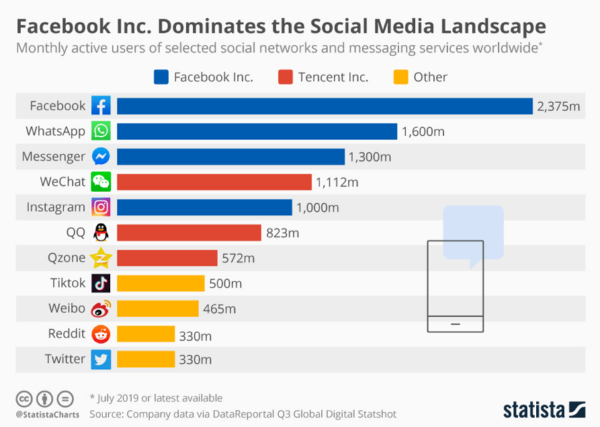Over the past decade, where companies are spending their marketing budget has changed dramatically, but everyone knows that having a marketing plan is crucial to building a companies brand- especially their online presence.
The Gartner CMO Spend Survey for 2019-2020 found that 61% of CMOs expected their marketing budgets to increase in 2020, demonstrating the importance of a cleverly executed plan. However, this is not always as easy as it might appear. Throwing a load of money on only one strategy can often result in failure, and it is much better to have a broad vision when it comes to the strategies needed to build your company. So, where should your marketing budget be spent? Let’s review the three main areas for the year ahead…
Social Media
In today’s age, social media is everywhere and if you’re not on it already, your business probably should be. But traditional media should not be neglected and both digital and traditional marketing approaches should work hand-in-hand.
Knowing what social media platform to invest in is essential, as not every platform will be applicable for your business. Below is a list of a few social media platforms:
- YouTube
- Snapchat
As you can see in the following chart, Social media continues to offer opportunities for brands to connect with consumers in new, across a wide variety of platforms, with the number of people online increasing year-on-year.

If you are unsure of where is best for your business to be present, start by identifying your buyer personas and researching their most used social platforms. This will mean you are not just taking a wild guess where your audience are ad will therefore be more likely to see engagement.
Building an online presence on the leading social media platforms such as Instagram or Facebook isn’t as expensive as it is challenging to stand out. Bloggers and Influencers have perfected the art of building an audience, usually with no budget at all. To maximise your sales on social media, without spending a great deal of money, you should look at similar brands or services that have a large following and see the types of posts that they put out there.
Giving your brand a personal edge, sharing behind the scenes images, and using video, will help generate interest in your product or service. Additionally, linking blog posts, collaborating with influencers, and doing giveaways are all excellent ways to build and engage an audience.
SEO
You’ve probably heard many times that Search Engine Optimisation (SEO) is a vital digital marketing tool, but even if you have a basic understanding of what it entails, you may not have a solid idea of what exactly it is and how to do it for your business.
Multiple different elements make up SEO; keywords, content, off-page SEO, local SEO and Search Engine Marketing (SEM). Understanding each of these and how they work is they to key to why this tool is so important, but in simple terms, SEO makes your website more visible, resulting in more traffic, providing more opportunities to convert prospects into customers.
This is not an easy area for businesses to get their head round and if you haven’t got an expert in-house then budget will need to be allocated to training, or outsourcing this to a marketing agency can be more cost-effective for some, with faster results.
Technology
Your marketing efforts should not be solely focused on attracting new customers but should also focus on retaining and engaging with your current customer base. Technology such as marketing automation software or customer relationship marketing (CRM) software are becoming vital in businesses to effectively serve your customer base.
It has been said that 2020 is the year of personalisation, with customers demanding more personalised content and service than ever before. One of the benefits of marketing software is the ability to do this at scale, aswell as aligning your sales & marketing teams, gaining enhanced customer insights enabling you to communicate more effectively, and improving ROI.
Hopefully, this article has provided an overview to where your budget could be spent in 2020. Remember, every company and industry is different, so you need to determine what is best for your company and then allocate those funds based on your desired ROI.